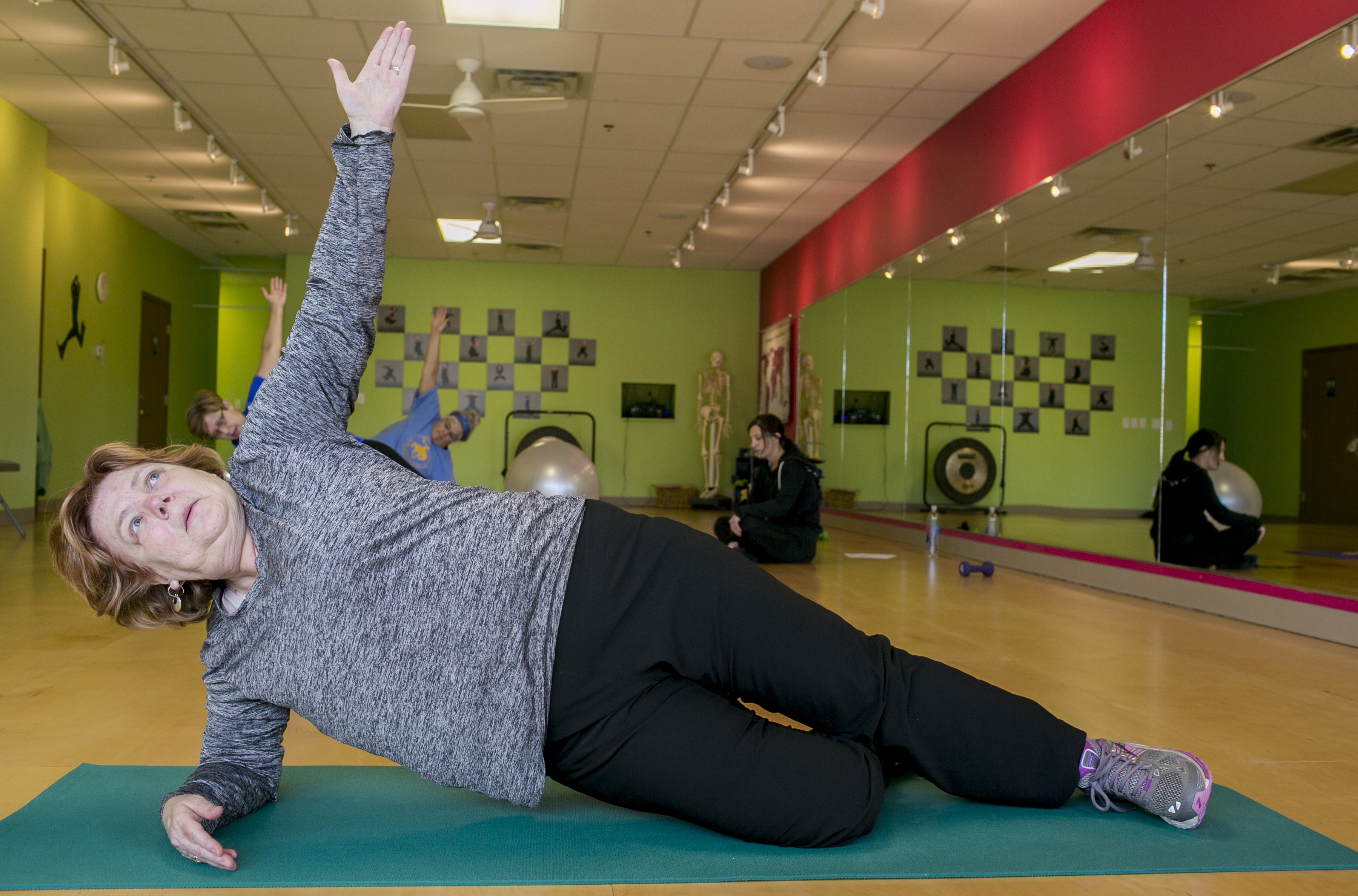
By Cindy Hadish
Fitness motivations evolve during middle age and beyond. For Carol MacVey, it was all about her grandchildren.
“I had gone to a lot of gyms and studios,” said Ms. MacVey, a lecturer in acting at the University of Iowa Theatre Department. “I just never stayed.”
Working out with a group of 20-somethings no longer appealed to Ms. MacVey, 72 , but she had a special motivation to increase her fitness level, especially after suffering from sciatica – pain caused by irritation of the sciatic nerve – that left her hospitalized. She also had a more recent bout with a frozen shoulder, preventing her from using her right arm, even for simple tasks such as putting on a sweater.
“I just decided I wanted to make a commitment to getting stronger,” she said. “I have two granddaughters (ages 1 and 3) and I want to play with them. That was a big motivating factor.”
While exercise benefits our health in numerous ways as we age, challenges to fitness can emerge.
During middle age, our bodies become more susceptible to injury. B one density decreases; changes in levels of hormones – such as testosterone and estrogen – can lead to fatigue; muscle mass and function declines for both men and women, along with heart function; and losing weight becomes more difficult with decreased metabolism – the amount of calories our bodies burn.
Staying physically active can improve many of those issues, b ut as with Ms. MacVey, standard exercise routines may no longer suffice. Biking and running can become hard on the knees, workouts at the gym may feel too intimidating and contact sports are almost out of the question due to the risk of injury.
Many health experts advocate 30 minutes of moderate exercise daily, which can be broken up into 10-minute increments, and can be as simple as a brisk walk.
Gardening, housework, such as vacuuming, and other forms of movement are other options to stay active in our daily lives.
For people hoping to increase their fitness levels, group exercise is another alternative.
Ms. MacVey noted that she had exercise DVDs, a bicycle and other exercise equipment, but found it difficult to stay motivated.
That changed when she joined a small group training class with other classmates at various stages of fitness that meets twice weekly with an option for a third day.
Starting with warm-ups, the group of five or so women work through cardio exercises, weights, crunches on exercise balls, stretches with resistance bands and more, all at their own pace.
Jokes, laughter and music provide the background to each 45-minute workout, along with encouragement from their instructor.
“Your brain is so much more active when you’re physically active,” said Beth Pelton, owner of Body Moves Fitness and Wellness Center in Coralville, where Ms. MacVey attends the small group training class.
The center’s students – as they’re known – range in age from their 30s up to 91, with most aged 55 or older, said Ms. Pelton, 68, a functional aging specialist who has written a book called “Active Living.”
Rather than wanting to lose 30 pounds before a wedding or class reunion, the students Ms. Pelton sees generally seek a more sustainable fitness program in a supportive environment.
“They want to move their bodies and stay active,” she said, citing some students with arthritis or coordination issues. “The driving idea is functional fitness; being able to do the things they want and need to do.”
Students are encouraged to move daily in a variety of ways with the goal of increasing their agility, balance, flexibility and more through every day activities. This is in addition to classes such as Zumba, yoga, T’ai Chi and Nia, a total body workout that blends nine movement forms.
Ms. Pelton cited the primary needs for health, fitness and wellness that include not only the physical dimension, but intellectual/mental, emotional, social and spiritual aspects.
“A lot of students are looking for a good social connection that’s healthy,” she said.
Ms. MacVey has found a supportive group with her fellow classmates.
“I really look forward to spending time with them,” she said. “That communal feeling is part of the joy of going.”
She also has seen milestones during the past year of going to class, including being able to overcome bouts of insomnia.
“I was having so many sleep problems,” she said. “That has totally changed. Now I go to bed and I sleep.”
Ms. MacVey has regained full use of her arm. Overall , she feels stronger and is now able to keep up with her grandchildren.
“Finally, there’s a confluence of all the needs I have to enjoy exercise,” she said. “I just feel better.”
Guidelines
To improve overall cardiovascular health, the American Heart Association suggests at least 150 minutes per week of moderate exercise or 75 minutes per week of vigorous exercise. Thirty minutes a day, five times a week is an easy goal to remember.
For people who would benefit from lowering their blood pressure or cholesterol, the group recommends 40 minutes of aerobic exercise of moderate to vigorous intensity three to four times a week to lower the risk for heart attack and stroke.
Check with your doctor before beginning any new exercise program.




